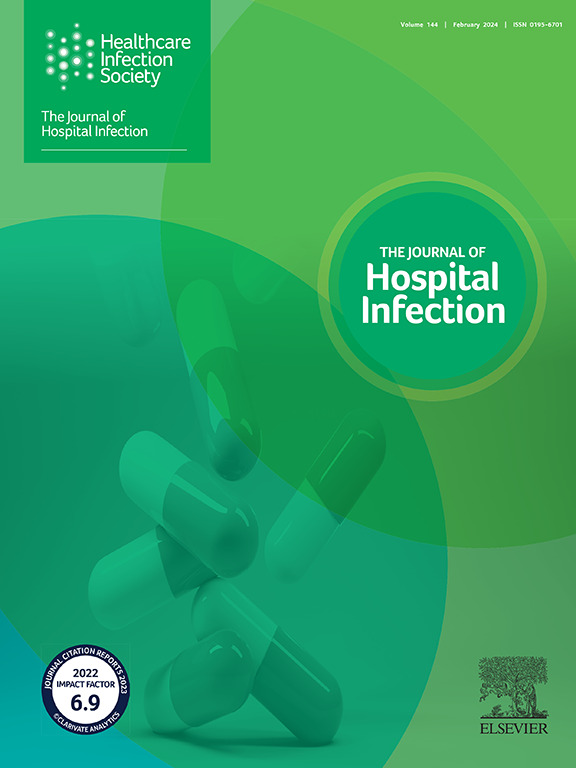Risk factors for blood exposure accidents and their reporting in dentistry in The Netherlands
IF 3.1
3区 医学
Q1 INFECTIOUS DISEASES
引用次数: 0
Abstract
Background
Oral healthcare practitioners (OHCPs) face risks for blood-borne viruses following blood exposure accidents (BEAs).
Aim
This study aimed to investigate occupational BEAs in Dutch oral healthcare clinics, explore BEA risk factors, and identify reasons for non-reporting.
Methods
Two questionnaires were distributed: one prospective questionnaire was sent to BEA reporters who contacted a nationally operating reporting centre for occupational BEAs (issued before and after European legislation on recapping), and a retrospective questionnaire was sent to clinics which did not report any BEA in the previous four years. Data were analysed and logistic regression was applied to identify factors associated with BEA occurrence and reporting. This study is reported according to the STROBE-statement.
Findings
A total of 516 questionnaires were returned (37.7%), with 445 OHCPs having experienced a BEA, compared with 69 who had not. Most BEAs occurred with anaesthetic needles (43.3%) while cleaning up instruments (51.6%). Recapping remained an important cause after its prohibition (P=0.076). Dentists were less informed on safety protocols (P<0.001) and BEA consequences (P<0.001) compared with non-dentists (oral hygienists and dental assistants). OHCPs with accurate knowledge of BEA protocols were more likely to experience BEAs (OR = 2.9, 95% CI 1.5–5.6, P=0.001) and to report a BEA (OR = 8.0, 95% CI 3.9–16.5, P<0.001) than those without. Dentists had 0.3 times lower odds (95% CI 0.1–0.7, P=0.004) of reporting BEAs than non-dentists.
Conclusions
Implementation of guidelines more effectively is crucial to prevent and reduce blood-borne disease transmission. Changing attitudes and behaviours towards recapping and safety-engineered devices is essential, as recapping needles continues to cause many BEAs.
荷兰牙科血液接触事故的危险因素及其报告
背景:口腔卫生保健从业者(OHCPs)面临血液暴露事故(BEAs)后血源性病毒的风险。目的本研究旨在调查荷兰口腔保健诊所的职业BEA,探讨BEA的危险因素,并找出未报告的原因。方法采用两份调查问卷:一份是前瞻性调查问卷,发给联系全国性职业BEA报告中心的BEA记者(在欧洲重述立法之前和之后发布),另一份是回顾性调查问卷,发给过去四年未报告任何BEA的诊所。对数据进行分析,并应用逻辑回归来确定与BEA发生和报告相关的因素。这项研究是根据STROBE-statement报告的。调查结果:共退回516份问卷(37.7%),445名ohcp经历过BEA, 69名没有经历过BEA。大多数BEAs发生在麻醉针(43.3%)和清理器械(51.6%)时。复盖在禁止后仍是重要原因(P=0.076)。与非牙医(口腔卫生员和牙科助理)相比,牙医对安全方案(P<0.001)和BEA后果(P<0.001)的了解程度较低。准确了解BEA方案的ohcp比不了解BEA方案的ohcp更有可能经历BEA (OR = 2.9, 95% CI 1.5-5.6, P=0.001),并报告BEA (OR = 8.0, 95% CI 3.9-16.5, P<0.001)。牙医报告BEAs的几率比非牙医低0.3倍(95% CI 0.1-0.7, P=0.004)。结论更有效地实施指南是预防和减少血源性疾病传播的关键。改变对复盖针和安全工程装置的态度和行为至关重要,因为复盖针继续导致许多bea。
本文章由计算机程序翻译,如有差异,请以英文原文为准。
求助全文
约1分钟内获得全文
求助全文
来源期刊

Journal of Hospital Infection
医学-传染病学
CiteScore
12.70
自引率
5.80%
发文量
271
审稿时长
19 days
期刊介绍:
The Journal of Hospital Infection is the editorially independent scientific publication of the Healthcare Infection Society. The aim of the Journal is to publish high quality research and information relating to infection prevention and control that is relevant to an international audience.
The Journal welcomes submissions that relate to all aspects of infection prevention and control in healthcare settings. This includes submissions that:
provide new insight into the epidemiology, surveillance, or prevention and control of healthcare-associated infections and antimicrobial resistance in healthcare settings;
provide new insight into cleaning, disinfection and decontamination;
provide new insight into the design of healthcare premises;
describe novel aspects of outbreaks of infection;
throw light on techniques for effective antimicrobial stewardship;
describe novel techniques (laboratory-based or point of care) for the detection of infection or antimicrobial resistance in the healthcare setting, particularly if these can be used to facilitate infection prevention and control;
improve understanding of the motivations of safe healthcare behaviour, or describe techniques for achieving behavioural and cultural change;
improve understanding of the use of IT systems in infection surveillance and prevention and control.
 求助内容:
求助内容: 应助结果提醒方式:
应助结果提醒方式:


